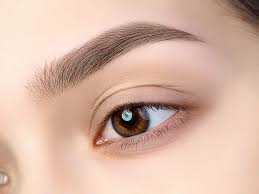Capturing the perfect reflection photo is a blend of skill, creativity, and a deep understanding of light and angles. Whether you’re photographing a serene lake mirroring the sky, a skyscraper reflecting the hustle of a city, or even a simple puddle after a rain, reflection photography can add a unique and artistic dimension to your portfolio. Here’s how to master this craft and create stunning reflection images that stand out.
Understanding Reflection Photography
Reflection photography is all about capturing an image where light is bounced off a reflective surface. The reflection adds depth, symmetry, and a touch of surrealism to the photo. This type of photography can be practiced in various environments, such as natural bodies of water, mirrors, glass, or even polished floors. The key to a compelling reflection photo is to focus on composition, lighting, and the quality of the reflection.
1. Choosing the Right Location
The first step in capturing the perfect reflection photo is selecting an ideal location. Nature offers a plethora of options such as lakes, rivers, and puddles. Urban environments provide opportunities with windows, metal surfaces, and wet streets. Here are some factors to consider when choosing a location:
- Water Bodies: Calm water bodies like lakes, ponds, and even large puddles create near-perfect reflections, especially during early mornings or late evenings when the wind is minimal.
- Cityscapes: Reflective surfaces in urban areas like glass buildings or shiny pavements can create interesting contrasts between the natural world and the man-made environment.
- After Rain: A fresh rainfall often leaves behind puddles that are perfect for capturing reflections. The wet ground can also add a glossy finish to your images.
2. Timing is Everything
Lighting plays a crucial role in reflection photography, and timing your shoot can significantly affect the quality of your photos. The best times to shoot reflection photos are during the golden hour (just after sunrise and just before sunset) or the blue hour (shortly after sunset or before sunrise). Here’s why:
- Golden Hour: The soft, warm light during the golden hour enhances colors and adds a magical glow to your reflections. Shadows are longer and softer, which can add depth to your composition.
- Blue Hour: The blue hour provides a cool, soft light that can create a tranquil and ethereal mood in your photos. Reflections captured during this time often have a moody, atmospheric feel.
3. Mastering Composition
Composition is key to any good photograph, but it’s especially important in reflection photography. The interplay between the subject and its reflection can make or break the image. Here are some compositional techniques to consider:
- Symmetry: One of the most striking aspects of reflection photography is the symmetry it can create. Align your subject and its reflection symmetrically within the frame to create a mirror-like effect. This works particularly well with landscapes and architecture.
- Rule of Thirds: While symmetry is powerful, don’t forget the rule of thirds. Placing your subject off-center can create a more dynamic and balanced image. Use the reflection to lead the viewer’s eye through the composition.
- Foreground Interest: Include an element in the foreground that leads into the reflection. This could be a rock, a plant, or even a person. It adds depth and makes the reflection more engaging.
- Negative Space: Don’t be afraid to use negative space. It can add a minimalist feel to your reflection photos and emphasize the reflection itself.
4. Playing with Perspective and Angles
The angle from which you shoot can dramatically alter the reflection. Experiment with different perspectives to see what works best for your scene:
- Low Angle: Getting close to the ground or water surface can exaggerate the reflection and create a more immersive image. This angle works particularly well with puddles or shallow water bodies.
- High Angle: Shooting from above can capture a broader view of the reflection, especially if you’re photographing large bodies of water or expansive reflective surfaces.
- Tilt: Tilting your camera can create a sense of distortion or abstraction in the reflection, adding an artistic twist to the image.
5. Using Polarizing Filters
A polarizing filter can be a game-changer in reflection photography. It helps to reduce glare and unwanted reflections from non-metallic surfaces like water and glass, allowing the reflection you want to stand out more clearly. It also enhances the contrast and saturation of the scene, making your reflection photos more vivid.
When using a polarizer, you can rotate it to control the intensity of the reflection. In some cases, you might want to minimize certain reflections to bring out the subject more, while in others, you might want to emphasize the reflection for a more dramatic effect. Please take a look at their webpage to find more asymmetrical balance photography examples.

6. Perfecting Your Camera Settings
While creativity and composition are important, the technical aspect of photography shouldn’t be overlooked. Here’s how to optimize your camera settings for reflection photography:
- Aperture: Use a small aperture (high f-number like f/11 or f/16) to ensure that both the subject and its reflection are in sharp focus. This is particularly important when shooting landscapes or cityscapes where you want everything to be in clear detail.
- Shutter Speed: Depending on the light conditions, you might need to adjust your shutter speed. A slower shutter speed can help in low-light conditions, but make sure to use a tripod to avoid camera shake.
- ISO: Keep your ISO as low as possible (around 100 or 200) to reduce noise in your images. Higher ISO levels can introduce grain, which can detract from the clarity of your reflection.
- Manual Focus: Reflections can sometimes confuse the autofocus system. Switching to manual focus gives you more control and ensures that both the subject and reflection are tack sharp.
7. Post-Processing for Perfection
Editing is the final step in achieving the perfect reflection photo. While it’s important to capture the best image possible in-camera, post-processing can enhance the final result. Here’s what to focus on:
- Cropping: Fine-tune your composition by cropping the image to emphasize symmetry or eliminate distractions.
- Adjusting Contrast and Saturation: Enhance the colors and contrast to make the reflection pop. Be careful not to overdo it, as it can make the image look unnatural.
- Sharpening: Apply selective sharpening to enhance details in both the subject and its reflection.
- Cloning and Healing: Remove any unwanted elements or distractions in the reflection using cloning or healing tools.
Conclusion
Reflection photography is a fascinating and rewarding genre that allows you to see the world from a different perspective. By carefully choosing your location, mastering composition, playing with angles, and fine-tuning your camera settings, you can create stunning reflection images that captivate viewers. Remember that practice is key; the more you experiment with reflections, the better you’ll become at predicting how light and angles interact. So, grab your camera, find some reflective surfaces, and start capturing the beauty of the world reflected back at you.




